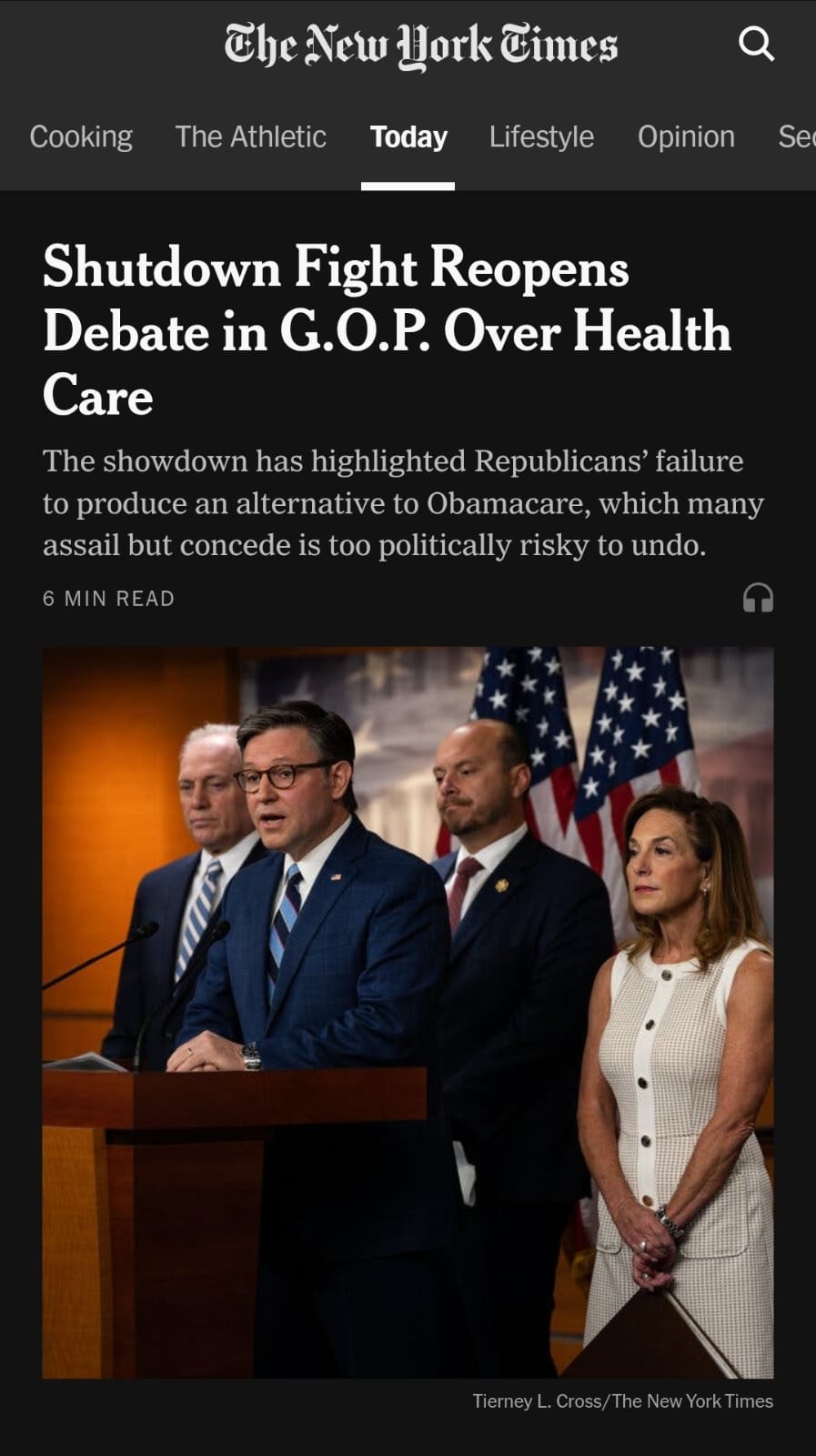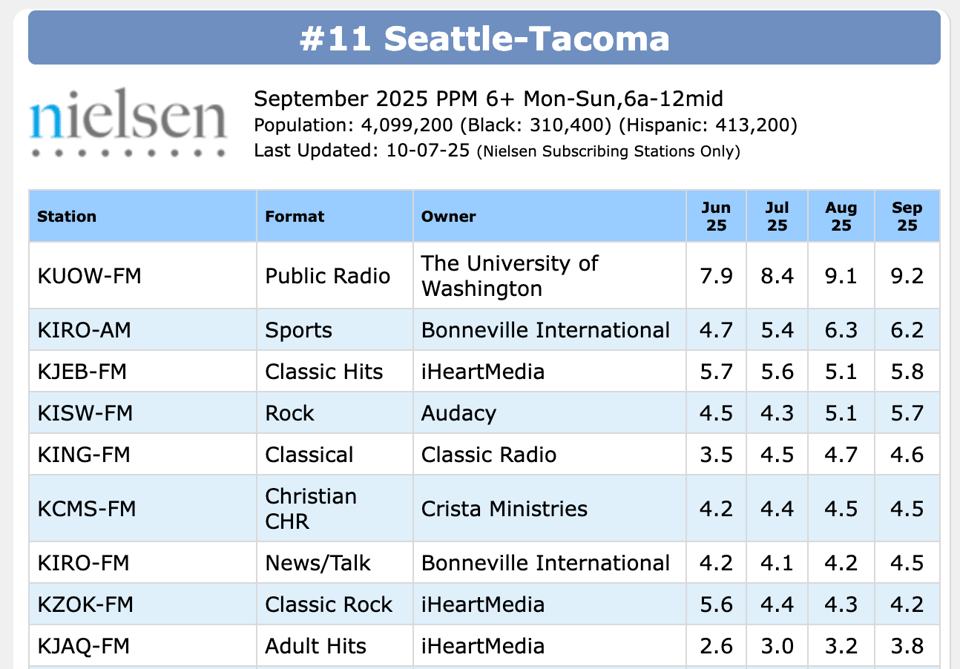What Protests? Media Made by Oligarchs

I learned a long time ago that I'm not very good at making predictions, so I usually avoid doing so. However, in the aftermath of yesterday's "No Kings" protests across the US, I’m reasonably sure that the national media coverage will not be commensurate with the size of the marches.
On Saturday, an estimated seven million Americans took to the streets to protest the current administration's policies. Depending on how much confidence you have in crowd estimation and historical records, Saturday ranks among the five largest simultaneous demonstrations in US history.
Yet, a few minutes ago, when I went to the New York Times homepage, their coverage of the protests was buried five stories down. Their top story, instead, was about the pardoning of disgraced former US Congressman George Santos [that top story was later replaced by a piece about the ongoing federal shutdown with coverage of the protests still relegated to the number five slot (see below)].

This is an editorial choice and one that fits national and local trends, as corporate consolidation leads to fewer, wealthier people driving the public agenda.
A Case Study from Seattle-Tacoma
I want to use my hometown of Tacoma and the greater Seattle media market as an example. Washington State is one of the most heavily Democratic-aligned states in the country. The last time a Republican presidential candidate carried the state was 1988—37 years ago. There are no Republicans representing the state in the US Senate. The last one, Slade Gordon, was voted out of office in the year 2000, and zero Republicans currently hold statewide elected office.
But you wouldn’t know any of this from looking at the media environment in the region. Two of the four local TV broadcasters are essentially right-wing propaganda.
The local ABC affiliate, KOMO, is owned by Sinclair Broadcasting. If you're unfamiliar with Sinclair, I recommend you take a look at this video. Sinclair and its various affiliates (Cunningham Broadcasting, Deerfield Media, and Howard Stirk Holdings) own 294 stations in 89 media markets across the country. These stations have a starkly conservative editorial stance, and the owners are heavily aligned with the current administration.
On the other hand, KCPQ (Fox 13) is owned outright by Rupert Murdoch, who acquired it from the Tribune Company in 2020.
It’s a similar story in the local radio market.

The station with the highest ratings is the local NPR affiliate, KUOW. But also in the market are three stations owned by Bonneville, which is a subsidiary of the Church of Jesus Christ of Latter-Day Saints. Two of them are news/talk stations: KIRO FM and conservative talk station KTTH.
To be clear, I'm not taking a shot at the LDS church. I have no smoke with Mormons and think Salt Lake City is pretty dope, but you would be naive to not believe that the church has a political point-of-view.
This means that, despite living in one of the most liberal regions in the country, households in the Seattle media market are awash, most unknowingly, in partisan media.
The National Picture
This pattern of ownership and influence is replicated with newspapers at the national level.
The Washington Post is owned by Jeff Bezos, one of the richest men in the world. The LA Times is owned by billionaire Patrick Soon-Shiong. Not coincidentally, both papers have recently taken very acquiescent editorial stances toward the administration.
Up the east coast, the Wall Street Journal is owned by Rupert Murdoch's News Corp. And the New York Times, since the pandemic and the 2020 Black Lives Matter protests, has seemed more interested in disciplining the left flank of the Democratic coalition than accountability journalism.
Oligarchs Don't Build, They Buy
None of this would be possible without the wave of corporate consolidation over the last 25 years. Sinclair’s ownership of nearly 300 stations was made possible by regulatory changes during the George W. Bush Administration.
Murdoch’s purchase of KCPQ was part of his effort to acquire Fox affiliates in NFL markets and was fueled by an infusion of cash after he sold most of the holdings of 20 Century Fox to Disney.
This is the pattern: oligarchy is a symptom of a permissive regulatory environment. They don't innovate or build better products; they buy their competition. A glaring example of this, and most relevant to my life, is Meta’s (then just Facebook) purchase of Instagram in 2012. At the time Instagram was eating Facebook’s lunch in terms of user growth. Facebook later repeated the trick with WhatsApp in 2014, which was cutting into the market share of Facebook’s Messenger. Now Zuckerberg has actively aligned himself with the administration.
The owner of Twitter was the biggest single donor to the President's re-election campaign.
A similar transformation is now underway with TikTok, which is being purchased by Larry Ellison—the first or second richest man in the world, depending on the day, an ally of the President and 2020 election denier. Ellison already owns Paramount and CBS and is remaking CBS News to fit his partisan wishes.
The Bottom Line
If you are a person living in Seattle or Tacoma—or lots of places around the US, your local news likely has a right-wing tilt.
Three of the four major papers in the country also do.
And the three largest social media companies are owned by billionaires who have pledged their allegiance to the administration.
This obviously plays a major role in shaping public opinion and consent manufacturing in the county. And don’t be shocked after you read this when you grab the paper and you see that the marches in which seven million of your fellow Americans participated are relegated below the fold.
—
This week I am scheduled to have US Representative Marilyn Strickland on the podcast to talk about the government shutdown. If you have questions you’d like me to pose to her, feel free to hit my inbox.
See you next week for the reader mailbag (for real this time).